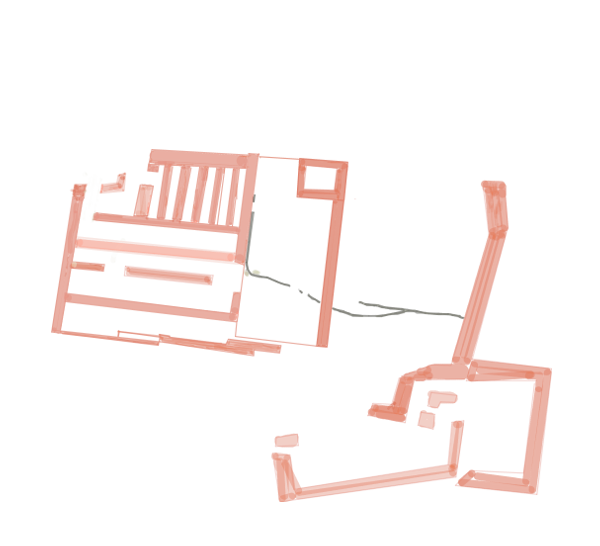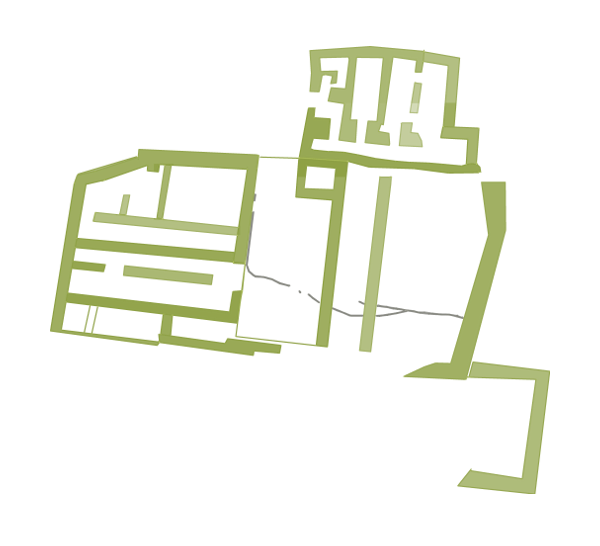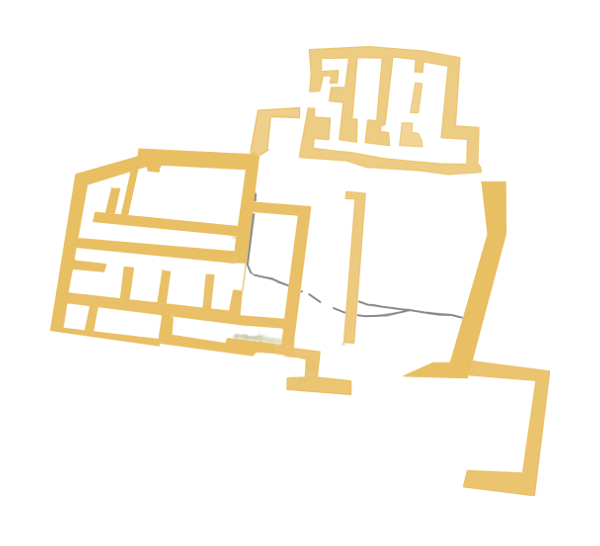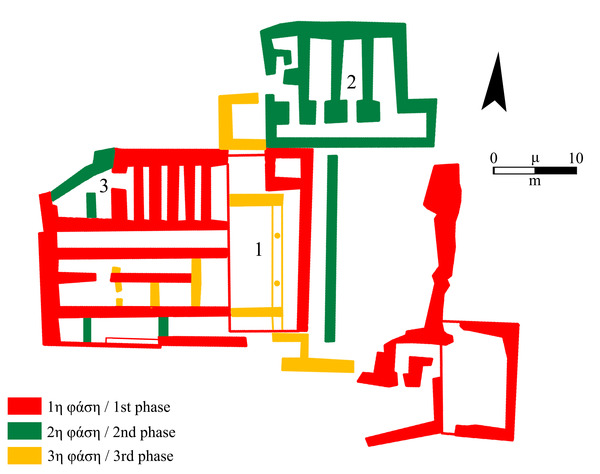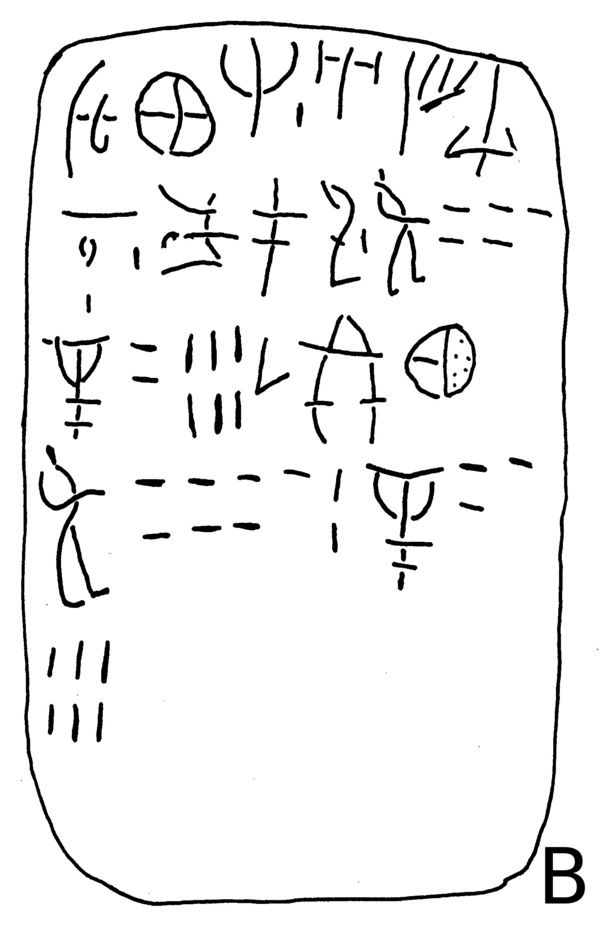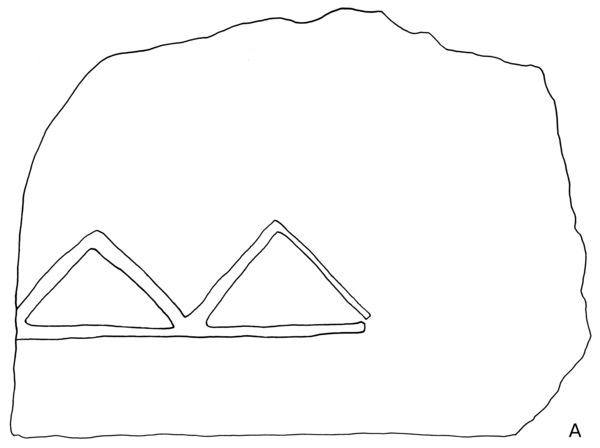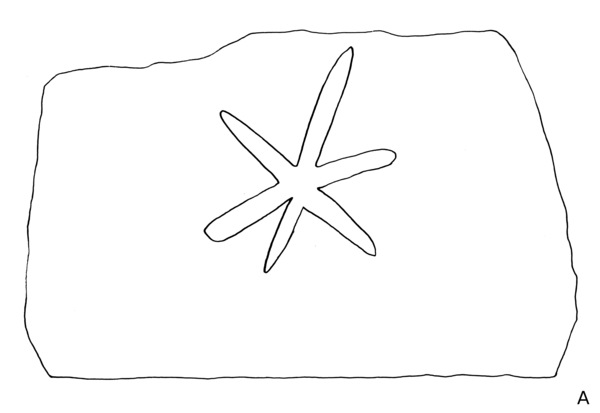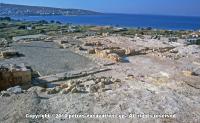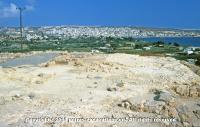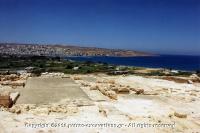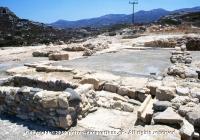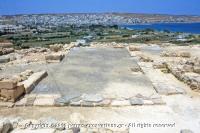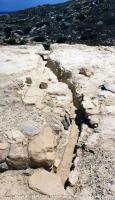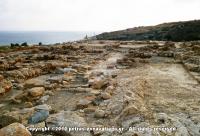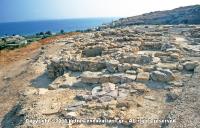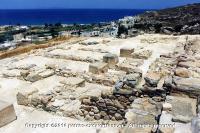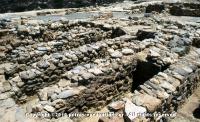Palace
Τhe palace of Petras was built in Middle Minoan IIA (1900-1800 BC), slightly later than the other similar buildings of Central Crete. Its preserved extent measures 2,500 m2.; the original size is not easy to calculate, as its south wing is completely destroyed. It had at least two storeys, and is equipped with all the features of the larger palaces, albeit on a smaller scale. Various parts of the structure were constructed with regularly cut blocks (ashlar masonry), 29 of them bearing carved 'masons' marks, mostly double axes, stars and branches (A). A monumental staircase, 4.20 m. in width, connected the lower terrace and the large magazines (2) to the central court (1). The latter had a plaster floor of excellent preservation and a system of carved drains.
The palace had a long period of use and three major architectural phases. The first building was destroyed by fire in Middle Minoan IIB (1700 BC). In the second phase, the Late Minoan IA (1600-1480 BC), the archive (3) went out of use, but the rest of the palace was reconstructed with additions and alterations in its plan. The second palace suffered two more destructions, probably due to natural causes. In the third phase, the Late Minoan IB (1480-1425 BC), dramatic changes occurred, the most important being the reduction of the central court and the increase of the storage space. To the final phase are dated two tablets inscribed with Linear A script (B), although it is not possible to say whether a Linear A archive ever existed at Petras.
The palace constituted the administrative, commercial and religious center of an extensive area, around the gulf of Sitia. A large group of artisans was also connected to the palace, producing pottery, stone vases and textiles. The industrial areas of the palace were situated on a higher small plateau, and were probably separated from the main building by a garden.
A serious crisis followed the destruction of the palace and the collapse of the palatial system. There is evidence for small scale reoccupation of the palace area, as well as on the sides of the hill, in Late Minoan IIIA (1400-1300 BC). In the Byzantine times (12th cent. AD), a cemetery was established among the Minoan remains.
- •1st phase
- •2nd phase
- •3rd phase
